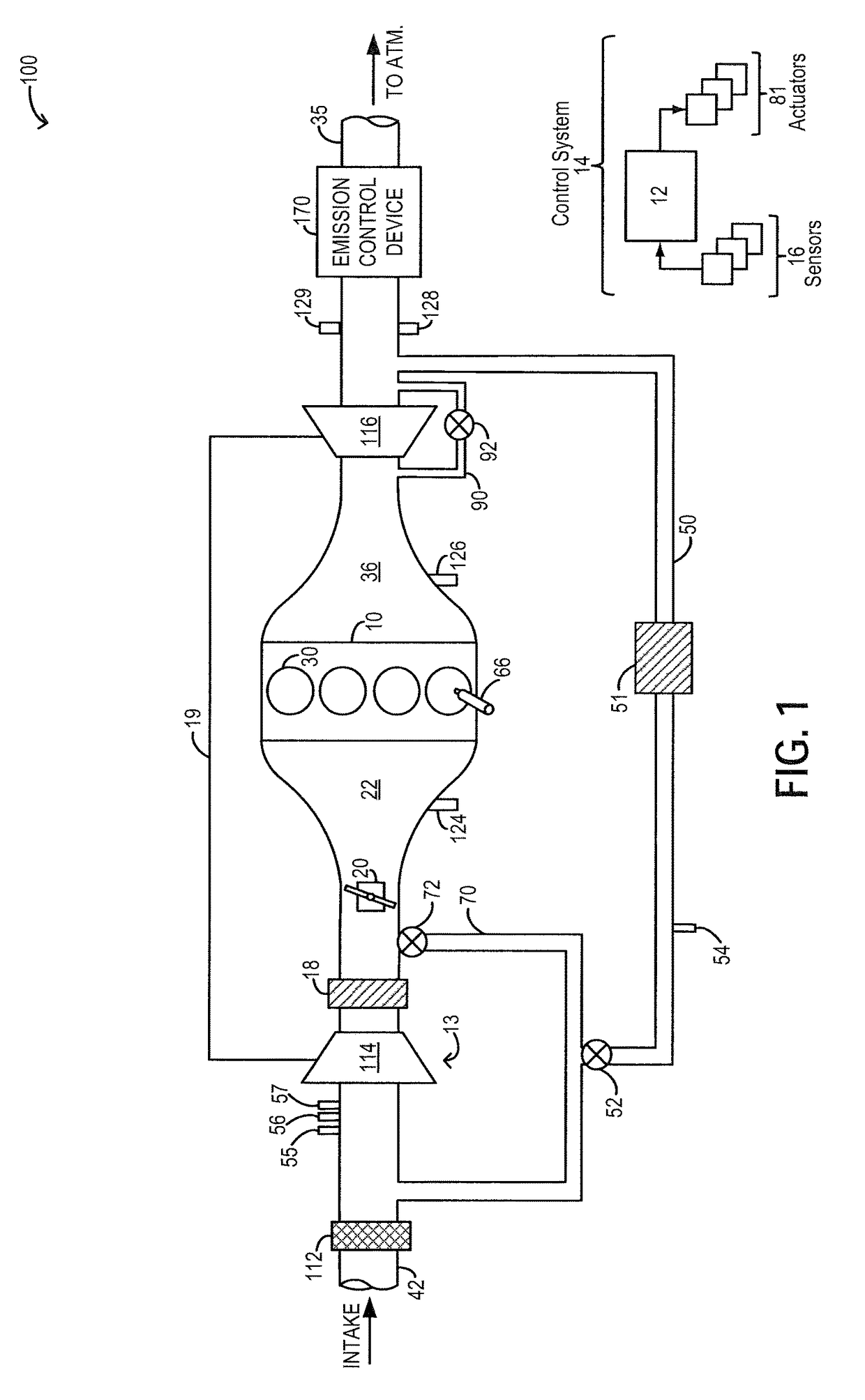Methods and systems for condensation control
a technology of condensation control and methods, applied in vehicle heating/cooling devices, vehicle cleaning, vehicle components, etc., can solve the problems of reducing the efficiency of condensation control, so as to achieve more effective and faster defrosting and increase the capacity to absorb water
- Summary
- Abstract
- Description
- Claims
- Application Information
AI Technical Summary
Benefits of technology
Problems solved by technology
Method used
Image
Examples
Embodiment Construction
[0012]Methods and systems are provided for recovering heat from an air conditioning system coupled to an engine, such as the engine system of FIG. 1, to warm charge flowing through a charge air cooler (CAC). In doing so, intake aircharge and coolant flowing though the charge air cooler's cooling circuit (such as the circuit of FIG. 2), can be warmed. An engine controller may be configured to perform a control routine, such as the routine of FIG. 3, to recover defrost heat by circulating coolant through a CAC bypassing a radiator during cold conditions. EGR delivery may be initiated once the CAC has been sufficiently warmed. An example adjustment is shown with reference to FIG. 4.
[0013]FIG. 1 schematically shows aspects of an example engine system 100 including an engine 10. In the depicted embodiment, engine 10 is a boosted engine coupled to a turbocharger 13 including a compressor 114 driven by a turbine 116. Specifically, fresh air is introduced along intake passage 42 into engine...
PUM
 Login to View More
Login to View More Abstract
Description
Claims
Application Information
 Login to View More
Login to View More - R&D
- Intellectual Property
- Life Sciences
- Materials
- Tech Scout
- Unparalleled Data Quality
- Higher Quality Content
- 60% Fewer Hallucinations
Browse by: Latest US Patents, China's latest patents, Technical Efficacy Thesaurus, Application Domain, Technology Topic, Popular Technical Reports.
© 2025 PatSnap. All rights reserved.Legal|Privacy policy|Modern Slavery Act Transparency Statement|Sitemap|About US| Contact US: help@patsnap.com



